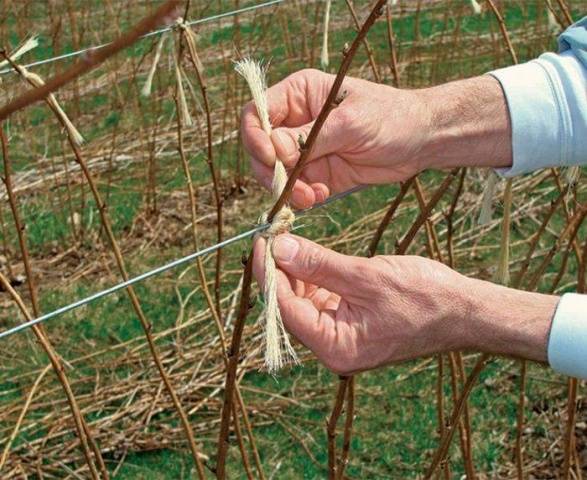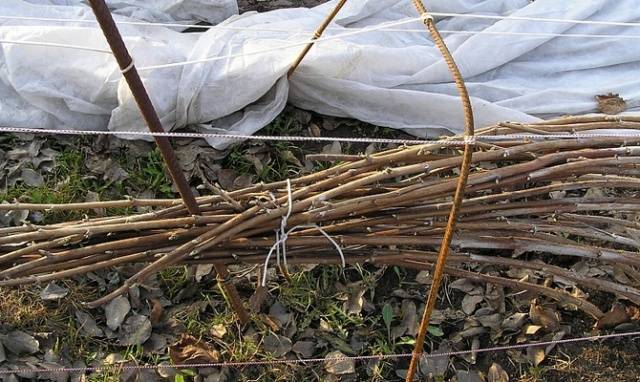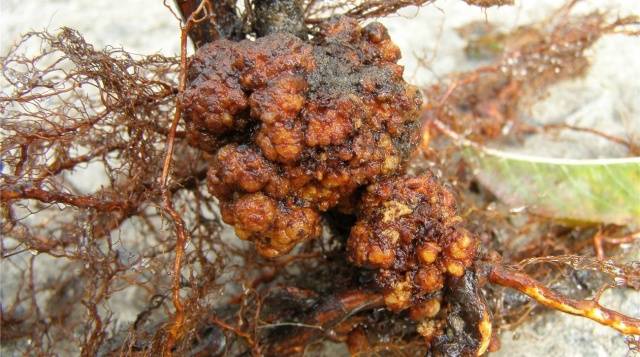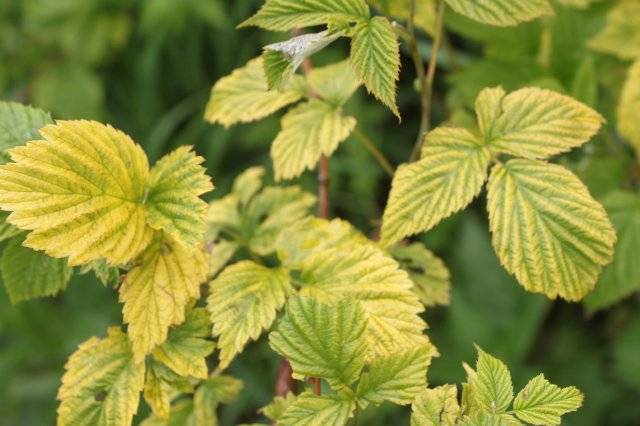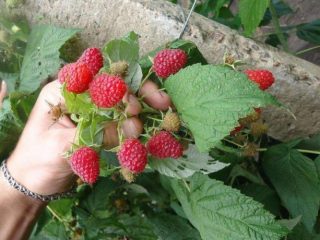Content
Remontant raspberries are a special group; berries can form on shoots of the first and second years of life. European gardeners have been producing such raspberries for more than two hundred years. In Russia, plants can be considered garden newcomers. Breeders pay great attention to remontant raspberries; many new varieties have been developed.
Raspberries Diamond is of domestic origin, its author is gardener experimenter Kazakov I.V. from Bryansk. The variety immediately became popular. Russians would like to have this amazing Brilliantovaya raspberry in their gardens, but there is not much information. We will try to talk about the features of raspberries, agricultural technology for growing and caring for a berry like the one in the photo to please you with a rich harvest.
Botanical properties
The story about the Diamond raspberry will be incomplete without a description:
- This is a remontant variety and differs in fruiting from ordinary plants. The Brilliantovaya variety bears fruit on one- and two-year-old shoots. Raspberries can be collected from the end of July until the first frost.
- A raspberry variety with straight shoots reaches a height of one and a half meters.The shoots of the first year are reddish with a barely noticeable waxy coating. There are thorns on raspberries, but they are small.
- The greenery is bright green, the leaves are slightly curled at the edges and have sharp teeth.
- The berries of remontant raspberries of the Brilliant variety, as noted in reviews, are shiny, red with a purple tint, similar to a precious ruby. If we talk about the size of the fruits, they are average, about 4 grams. Look at the photo, there they are, diamonds in the palm of your hand!
Pros and cons of the variety
The Brilliant raspberry variety has a lot of advantages, although the disadvantages cannot be kept silent either. Everything is noted in the table:
| Advantages | Flaws |
|---|---|
| Excellent external and taste qualities. | Planting raspberries in the shade nullifies all the efforts of gardeners due to a decrease in yield. |
| Long duration of harvest. | You can’t do without tying up the shoots. A bountiful harvest bends the shoots to the ground. |
| Can easily survive short-term drying out of the soil and high temperatures | It produces few offspring, making reproduction difficult. |
| Good transportability | |
| From one bush you can collect from 2.5 to 4 kg of berries. |
How to plant raspberries
Choosing a time
If you want to propagate remontant raspberries Diamond variety, this can be done in spring and autumn. When planting in autumn, they focus on warm weather in September or early October. In autumn and early summer, in contrast to spring propagation, seedlings with a closed root system are used. In this case, the raspberries take root faster. Summer and spring plantings will delight you with delicious ruby berries.
Landing site requirements
The Brilliant raspberry variety, judging by the description, is demanding on lighting.
It’s good if there is space between buildings or along the fence on the south side. Look at the photo how abundantly the remontant variety Brilliantovaya bears fruit in the open air.
Particular attention should be paid to the depth of groundwater: no higher than one and a half meters. Although the Diamond raspberry is a moisture-loving plant, according to gardeners, excess water leads to rotting of the roots. Therefore, low places for planting remontant raspberries are not suitable, as are too high ones.
Preparing the site
Dig up the soil using the bayonet of a shovel and remove the roots. weed. The hole for the remontant raspberry seedling of the Brilliantovaya variety should be 40x50 cm. It will be convenient to place the root system in it. Humus or compost, superphosphate and potash fertilizers are poured into the bottom of the pit. The whole composition is mixed well and filled with water.
Features of choosing planting material
To grow a good bush of the Diamond variety, you need to stock up on appropriate planting material. It is advisable to purchase seedlings in specialized stores or nurseries. Material purchased on the street can be very disappointing.
What criteria apply to seedlings:
- the Brilliantovaya raspberry shoot must be thicker than 1 centimeter, and there must be no damage or signs of disease;
- the root system is well developed, length 15 cm and above;
- The seedling should have up to two healthy shoots with buds.
The root system of varietal raspberry planting material can be open or closed.
What planting material for raspberry propagation Regarding the use of the root system, each gardener decides independently.
Landing rules
Sometimes, for various reasons, it is not possible to prepare the soil in advance for planting Brilliantovaya raspberries. It can be fixed. We fertilize the soil immediately before planting.
And now about the landing rules:
- If the root system of Diamond raspberry seedlings is open, inspect it. Remove all brown roots, as well as damaged ones. Prepare a mash of clay and mullein in advance and dip the roots in it.
- Place the seedling straight into the hole, straightening the roots. If the raspberry root system is closed, then this step is skipped, as well as dipping in mash.
- Fill the top with fertile soil and make a hole for watering. The surface around the seedling needs to be trampled.
- After watering, sprinkle with mulch. It will retain moisture and provide additional nutrition.
If raspberry varieties Diamond is planted in several rows, then row spacing, according to the description, is allocated up to 1.5-2 meters.
By July you will have a kindergarten like the one in the photo.
Secrets of agricultural technology
Top dressing
Diamond raspberry, as mentioned in the description of the variety, requires special care, in particular, it is necessary to constantly feed it.
Let's consider the fertilizer application scheme:
- In March, the plantings are fed for the first time. Urea (20 grams) is dissolved in a bucket of water and poured over one square meter.
- When peduncles form and flowers begin to bloom, a second feeding of Brilliant raspberries is required. It will require potassium sulfate (2 tablespoons), potassium sulfate (3 tablespoons). They are dissolved in ten liters of water. The watering rate is the same.
- The plants are fed the third time when the harvest is harvested. After all, diamond raspberries need to gain strength for the winter. Add a spoonful of potassium sulfate and two boats of double superphosphate to a bucket of water.
Raspberries respond well to feeding with mullein (1:10) and chicken manure (1:5). It must be diluted in accordance with the specified proportions. Such feeding raspberries carried out every month separately from fertilizing.
Watering requirements
Raspberries of the Brilliant variety are demanding when it comes to watering, although they can withstand short-term drying out of the soil. It should be taken into account that in such a situation, the sugar content in the berry decreases during ripening. Excess vaga makes the fruit watery. In a word, when watering you need to find a middle ground.
When to water raspberries:
- in the beginning of May;
- when shoots begin to form;
- twice in June and July;
- at the beginning of August;
- before sheltering for the winter.
Up to one and a half buckets of water are poured onto one plant. Raspberries respond well to artificial rain (photo below), but this procedure is performed either before sunrise or in the evening.
How to trim raspberries
Remontant raspberries of the Brilliantovaya variety increase yields with constant pruning. But there are laws here, because fruiting occurs on both one-year and two-year-old shoots.
Let's look at this issue in more detail:
- If you grow raspberries on first-year shoots, then in the fall you need to cut out all the shoots to the ground, without stumps. As gardeners say, the plantation is “mowed.” When young shoots appear in the spring, the bed is thinned out and the excess is removed. To obtain a harvest, 5-6 well-developed healthy shoots from one root are enough.
- If the raspberry tree is formed from shoots of the first and second years, then the shoots that have grown over the summer are left to winter. Damaged branches need to be cut out for the winter. In the spring, an inspection is carried out, shoots that did not survive the winter well are cut out, and then the young shoots are thinned out. Admire these beauties in the photo.
Do I need to tie it up?
Some varieties of remontant raspberries are not tied up, since this is not necessary. But this does not apply to Diamondova. If you do not carry out the necessary work, you can lose most of the harvest. The fact is that due to the abundance of berries, the erect raspberry shoots cannot withstand the weight and bend down to the ground.
It is best to use a double trellis for tying. The pillars are installed, three rows of wire or strong, non-stretching twine are stretched between them. Each shoot is tied in three places. Remontant raspberries of the Brilliantovaya variety not only increase the yield, but also maintain the integrity of the shoots during winds and showers, air circulates freely. In addition, the berries will not end up on the ground, and spores of fungal diseases will not fall on them.
Wintering
If you live in regions with a mild climate and abundant snow, then you will not need special shelter for the remontant Brilliant raspberry. But for the Urals and Siberia one cannot do without shelter.
As we have already said in the description, remontant raspberries of the Brilliantovaya variety bear fruit on one- and two-year-old shoots. Depending on which option you like best, the plantations will be prepared for winter.
If you need Diamond raspberry shoots for next year, after fruiting, bend them to the ground before frost hits.
Brilliant raspberry shoots are tied into bunches (photo), covered with non-woven material and covered with dry soil or sawdust. To prevent the shelter from blowing away in winter before snow falls, boards are placed on top.
The ridges with cut raspberries are covered in the same way.
Diseases and pests
Remontant raspberries of the Brilliantovaya variety are resistant to many diseases. But with improper care, if the gardener makes mistakes in agricultural cultivation techniques, under unfavorable conditions the plant is still susceptible to some diseases. Fungal diseases can be introduced along with planting material.
What diseases (see photo) may varietal Diamond raspberries suffer from:
- anthracnose;
- purple spotting (didimella);
- rust;
- root cancer;
- chlorosis;
- canker spot (cancer of stems).
Among the pests (photo below) on remontant raspberries of the Brilliantovaya variety, the most common are:
- raspberry glass;
- raspberry beetle;
- weevil;
- stem fly.
Methods for preventing and controlling diseases and raspberry pests Brilliantovaya varieties are traditional, exactly the same as for all other varieties of this type of plant.
Harvesting, storage
Berries are harvested from the end of July until the first frost. As a rule, remontant raspberries do not last long in the refrigerator. Diamond can be kept for up to 4 days.
Most often, jam, jam, and compote are prepared from the berries. Stores well frozen in the refrigerator. When you take out a jar of Diamond variety raspberries, it’s like summer has arrived!










